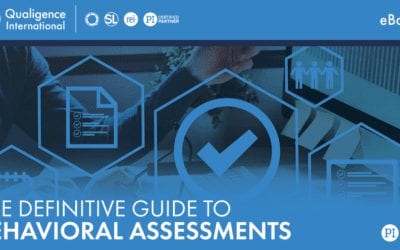Record unemployment is driving big changes in the labor market. However, some unique characteristics of the legal field combined with demographic shifts are posing new challenges to recruiters.
In this article, we’ll explore some of the biggest shifts in the legal talent market and how they affect the recruiting process.
Firms Are Being Viewed as a Steppingstone to In-House Positions
Millennials have a reputation for leaving positions faster than older generations. They aim to quickly gain experience before moving onto bigger and better things without much concern for company loyalty. When you consider the fact that working as counsel at a firm is increasingly associated with long hours, menial work, and lower chances of being promoted to a partner, this really shouldn’t come as a surprise.
In general, a lot of new graduates are looking to move to in-house positions sooner rather than later – even if it means taking a pay cut. Recruiters working on behalf of firms should be cognizant of this trend, while conversely, it can be a selling point for open in-house positions.
Increasing Demand for Diversity
Almost every law firm will tell you that diversity is a top priority for their talent acquisition teams, but unfortunately, it’s a case of easier said than done. More and more corporate clients are demanding diversity from law firms, creating a lot of competition for these candidates. Understanding that only 19% of equity partners are women and only 16.1% of attorneys are diverse, it doesn’t take a rocket scientist to see why diversity initiatives are so difficult.
There’s no easy answer for how companies get around these challenges, but it is key that recruiters understand the issue. Oftentimes, recruiters can play an important role in letting hiring managers know what is and is not realistic for hiring initiatives. For example, if a client wants to dramatically improve the diversity of their staff when the population of their community doesn’t reflect that, it’s important for recruiters to be upfront about the reality of the situation.
The Workforce is Aging and No One Really Knows What Comes Next
The workforce in every sector is aging, but it’s especially pronounced in the field of law. The median age of lawyers was 49 in 2016. Furthermore, the amount of first year students was down 24.3% in 2018 from its peak in 2010. In fact, the amount of law school enrollments has steadily declined since 2010. Altogether, it’s clear that the law field is dealing with an aging workforce and must contend for knowledge transfer and filling senior positions as baby boomers finally retire.
Companies with a lot of aging legal professionals should start looking into comprehensive plans to ease the transition. Law firms are unique in that oftentimes, a single experienced lawyer plays a key role in most of their business. As a result, they must be particularly proactive in handling these generational shifts.
Knowing Is Half the Battle
As recruiters, understanding the trends and dynamics in our target industry is a critical first step. When we understand what companies and candidates alike are experiencing, thinking, and feeling, we’re able to connect with them and build better relationships. At the end of the day, that’s what recruiting is all about.






